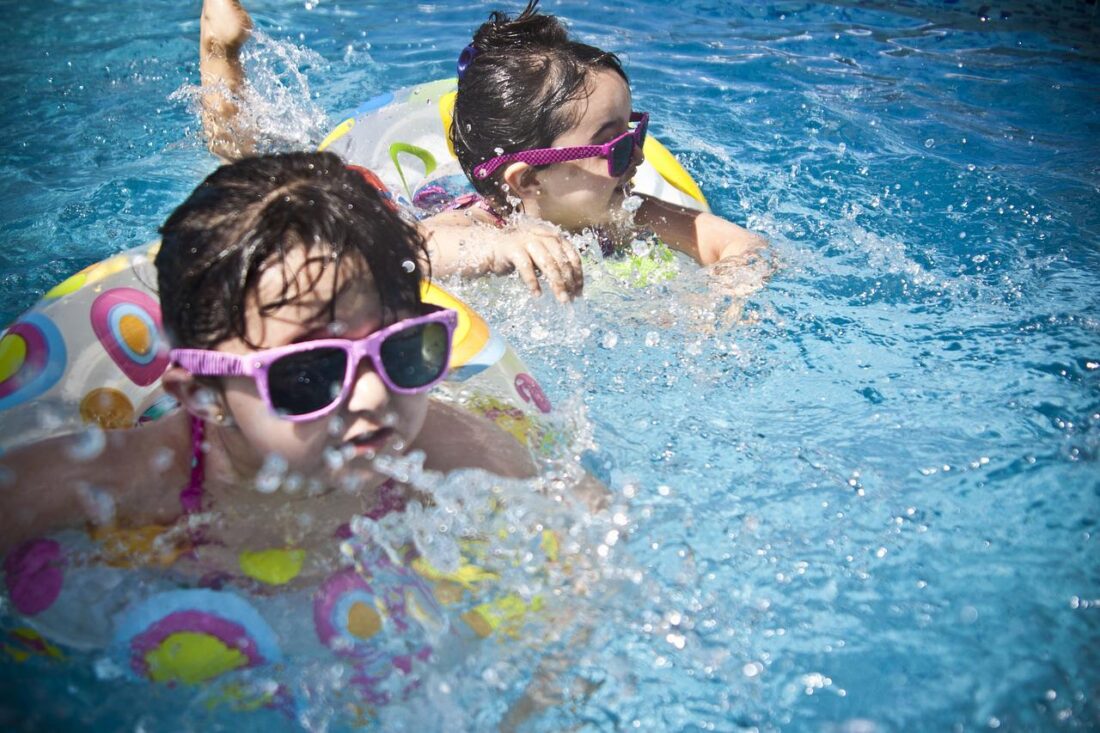When teaching children to swim, the focus is on building their comfort, confidence, and safety in the water. Yet, mastering this vital skill isn’t always straightforward and can present hurdles. Missteps along the way can slow a child’s progress and even put them at risk.

To ensure a positive and safe learning experience for young swimmers, it’s crucial to sidestep common mistakes. By doing so, you’ll create an effective and enjoyable environment for aquatic education. Dive into our blog to equip yourself with the knowledge needed to set your children up for success in the water.
5 Mistakes to Avoid When Teaching Your Child to Swim
Forcing into the water
Forcing your child into the water is a big no-no. This approach can create lasting negative associations with swimming. While it’s common for parents or coaches to want kids to conquer fear and become proficient swimmers, applying pressure can have the opposite effect, causing anxiety and resistance.
It’s normal for some children to be hesitant about diving in. Instead of forcing them, opt for a more empathetic, understanding, and patient approach to your private swim lessons. Begin by helping them feel at ease in the shallow end or by supporting them near the pool’s edge.
Rushing the process
Swimming is a skill that requires patience and practice. Children may need time to conquer fears and master techniques like floating or swimming underwater.
One common mistake is rushing the learning process. Each child learns at their own pace, and pushing them to advance too quickly can cause stress and anxiety. It’s important to prioritize patience and allow them to explore the water comfortably, gradually building confidence and trust.
Most swimming programs follow a structured curriculum, starting with basic skills and progressing to more advanced strokes. Coaches typically don’t move students to the next level until they’ve fully grasped the current lesson.
Neglecting safety measures
Private swim lessons often include essential water safety education alongside stroke techniques. While mastering different strokes is crucial, understanding water safety rules is equally vital.
Never leave a child unsupervised near water, regardless of their swimming skills. Make sure safety precautions like life jackets are readily available.
Teaching children water safety rules, such as never swimming alone and avoiding shallow diving, is essential. This education fosters responsible behavior around water, minimizing the chance of accidents.
Overdependence on flotation devices
While flotation devices like arm bands or inflatable vests can provide children with a sense of safety and buoyancy in the water, relying on them too much can hinder their swimming progress and create a false sense of security.
Overdependence on flotation devices can prevent children from learning essential swimming techniques, such as kicking, arm strokes, and breath control. This reliance may impede their ability to swim independently and increase panic if they find themselves without these devices.
Additionally, relying solely on floatation devices may lead parents to believe that their child is entirely safe in the water, potentially neglecting the need for close supervision. It’s important to strike a balance and use these tools as aids rather than substitutes for learning proper swimming skills.
Lack of positive reinforcement
Positive reinforcement plays a crucial role in shaping your child’s behavior, confidence, and enjoyment of swimming. Without it, their learning experience and attitude toward swimming can suffer.
Children who lack positive feedback during private swim lessons may feel discouraged or disinterested in continuing. This absence of encouragement can also impact their self-esteem and motivation, slowing their progress in acquiring essential swimming skills.
Some swimming programs provide rewards for achieving milestones, such as iron-on skill patches to signify passing a level. These incentives can motivate children to strive for progress and completion of the program.
Furthermore, it’s important that you focus on providing constructive feedback that highlights your child’s progress and areas for improvement in a supportive manner. Avoid criticism or negative reinforcement, as this can undermine their confidence and enthusiasm for learning.
Not providing the necessary gear
Prepare your child for swimming activities by ensuring they have the right gear. Start with swimwear that allows for unrestricted movement and opt for durable, quick-drying materials. Avoid loose clothing that could hinder movement or pose safety risks.
Consider investing in swim caps and goggles to enhance their experience. Caps keep hair out of the face and reduce drag, while goggles protect eyes from irritation and improve visibility underwater.
While avoiding over-reliance on flotation devices, they’re essential for beginners. Options like kickboards, pool noodles, and inflatable vests cater to various needs and preferences.
Enhance your child’s learning with teaching aids like colorful toys, floating rings, and diving sticks. These props make swimming skills fun and interactive, keeping your child engaged and enthusiastic.
Steer Clear of These Common Mistakes
Achieving success in teaching children to swim requires patience, reinforcement, and the proper tools. By avoiding common mistakes and adopting best practices, you can create a supportive environment for young swimmers to excel and master essential aquatic skills.
Parental guidance is key in every aspect of your child’s swimming journey, from conquering fear to refining techniques and fostering a love for swimming.
For more insights on teaching your child to swim, explore the Bear Paddle blog.


